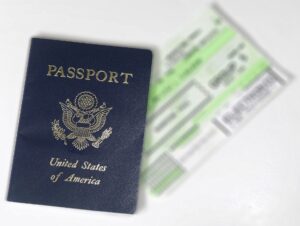 In June 2024, the U.S. government announced a beta release of an online passport renewal system. If you’re eligible, the system will open for a limited midday time window daily where eligible U.S. citizens can start their application. After the system’s limit for the day has been reached it will close and reopen the following day. Depending on how the beta testing goes, this likely will become a standard option. Many may have let their passport expire over the last few years and this is a convenient option if certain requirements are met. What are the requirements and the pros and cons of renewing online? We outline below.
In June 2024, the U.S. government announced a beta release of an online passport renewal system. If you’re eligible, the system will open for a limited midday time window daily where eligible U.S. citizens can start their application. After the system’s limit for the day has been reached it will close and reopen the following day. Depending on how the beta testing goes, this likely will become a standard option. Many may have let their passport expire over the last few years and this is a convenient option if certain requirements are met. What are the requirements and the pros and cons of renewing online? We outline below.
Am I eligible to renew online? It depends on a number of factors, all of which can be viewed on the U.S. Department of State website containing the latest information. A few key highlights that cover many situations:
- Your most recent passport was valid for 10 years, and you are age 25 or older
- Your passport you are renewing was issued between 2009 and 2015, or over 9 years but less than 15 years from the date you plan to submit your application. It is acceptable if your passport is expired.
- You are not making any changes to your name or other key information.
- You are not traveling internationally for at least 8 weeks from the date you apply, as only routine (not expedited) service is available for online processing.
- You are currently living within the United States or a U.S. Territory
How do I renew online? If you meet all requirements, you first must set up a MyTravelGov account. After creating your account, click on the “Renew Your Passport” button on the home page to start your application. You can save your application and finish it within 30 days; if you don’t complete your application in 30 days you’ll need to start the process over.
What are some of the pros of online renewal? Several countries including Ireland and the U.K. already have online passport renewal in place and the process is relatively streamlined. It also reduces headaches associated with paperwork, lost mail, and postage costs. Unlike traditional passport renewal, only standard processing is available online which currently takes 6-8 weeks. If you are traveling before then and need expedited processing (currently estimated at 2-3 weeks), you can still renew by mail.
Potential pitfalls of online renewal. While other countries report smooth processing, going online of course means some risk of security breaches versus using paper and U.S. mail. You’ll also need to upload an approved photo in a JPEG format, so folks who aren’t overly tech savvy might find the traditional renewal option easier. When renewing online you must pay by debit card, credit card, or ACH. If you choose the ACH option, it may take 3 additional days to process the payment.
Other information to know. If applying the traditional way, you’d submit your current or expired passport in the U.S. mail with your application. With online renewal, know that your most recent passport will immediately be invalidated when you submit your application, and you cannot use it for international travel. That said, your current passport must be in your possession and not mutilated, lost or stolen. Fees for online renewal are the same as the traditional method. You can also renew a passport card online, but only if you’ve already been issued one previously under the same time periods listed above.
Online passport renewal is not yet the norm in the U.S.; this is the second time it’s been beta tested. It does not save processing time or fees, just the hassle of mailing. There are pros and cons to consider. If you don’t meet the requirements or have hesitation to the potential pitfalls, know that traditional mail renewal is still a widely used option.

 My goal is to simplify travel-planning through an equal exchange process where I acquire your ideas and expectations for your trip relieving you of the worry, hassle, stress and time that accompanies Do-It-Yourself planning.
My goal is to simplify travel-planning through an equal exchange process where I acquire your ideas and expectations for your trip relieving you of the worry, hassle, stress and time that accompanies Do-It-Yourself planning.